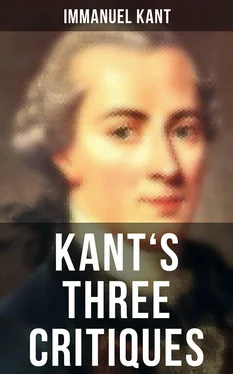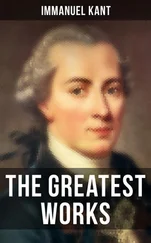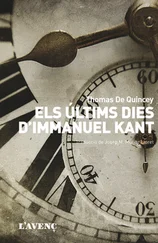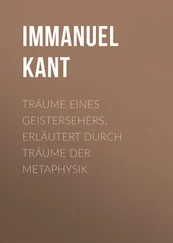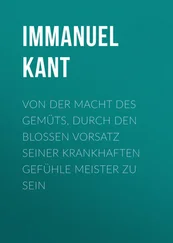Thus, the law of succession of time is in all instances the only empirical criterion of effect in relation to the causality of the antecedent cause. The glass is the cause of the rising of the water above its horizontal surface, although the two phenomena are contemporaneous. For, as soon as I draw some water with the glass from a larger vessel, an effect follows thereupon, namely, the change of the horizontal state which the water had in the large vessel into a concave, which it assumes in the glass.
This conception of causality leads us to the conception of action; that of action, to the conception of force; and through it, to the conception of substance. As I do not wish this critical essay, the sole purpose of which is to treat of the sources of our synthetical cognition a priori , to be crowded with analyses which merely explain, but do not enlarge the sphere of our conceptions, I reserve the detailed explanation of the above conceptions for a future system of pure reason. Such an analysis, indeed, executed with great particularity, may already be found in well-known works on this subject. But I cannot at present refrain from making a few remarks on the empirical criterion of a substance, in so far as it seems to be more evident and more easily recognized through the conception of action than through that of the permanence of a phenomenon.
Where action (consequently activity and force) exists, substance also must exist, and in it alone must be sought the seat of that fruitful source of phenomena. Very well. But if we are called upon to explain what we mean by substance, and wish to avoid the vice of reasoning in a circle, the answer is by no means so easy. How shall we conclude immediately from the action to the permanence of that which acts, this being nevertheless an essential and peculiar criterion of substance (phenomenon)? But after what has been said above, the solution of this question becomes easy enough, although by the common mode of procedure — merely analysing our conceptions — it would be quite impossible. The conception of action indicates the relation of the subject of causality to the effect. Now because all effect consists in that which happens, therefore in the changeable, the last subject thereof is the permanent, as the substratum of all that changes, that is, substance. For according to the principle of causality, actions are always the first ground of all change in phenomena and, consequently, cannot be a property of a subject which itself changes, because if this were the case, other actions and another subject would be necessary to determine this change. From all this it results that action alone, as an empirical criterion, is a sufficient proof of the presence of substantiality, without any necessity on my part of endeavouring to discover the permanence of substance by a comparison. Besides, by this mode of induction we could not attain to the completeness which the magnitude and strict universality of the conception requires. For that the primary subject of the causality of all arising and passing away, all origin and extinction, cannot itself (in the sphere of phenomena) arise and pass away, is a sound and safe conclusion, a conclusion which leads us to the conception of empirical necessity and permanence in existence, and consequently to the conception of a substance as phenomenon.
When something happens, the mere fact of the occurrence, without regard to that which occurs, is an object requiring investigation. The transition from the non-being of a state into the existence of it, supposing that this state contains no quality which previously existed in the phenomenon, is a fact of itself demanding inquiry. Such an event, as has been shown in No. A, does not concern substance (for substance does not thus originate), but its condition or state. It is therefore only change, and not origin from nothing. If this origin be regarded as the effect of a foreign cause, it is termed creation, which cannot be admitted as an event among phenomena, because the very possibility of it would annihilate the unity of experience. If, however, I regard all things not as phenomena, but as things in themselves and objects of understanding alone, they, although substances, may be considered as dependent, in respect of their existence, on a foreign cause. But this would require a very different meaning in the words, a meaning which could not apply to phenomena as objects of possible experience.
How a thing can be changed, how it is possible that upon one state existing in one point of time, an opposite state should follow in another point of time — of this we have not the smallest conception a priori . There is requisite for this the knowledge of real powers, which can only be given empirically; for example, knowledge of moving forces, or, in other words, of certain successive phenomena (as movements) which indicate the presence of such forces. But the form of every change, the condition under which alone it can take place as the coming into existence of another state (be the content of the change, that is, the state which is changed, what it may), and consequently the succession of the states themselves can very well be considered a priori , in relation to the law of causality and the conditions of time. 31
When a substance passes from one state, a, into another state, b, the point of time in which the latter exists is different from, and subsequent to that in which the former existed. In like manner, the second state, as reality (in the phenomenon), differs from the first, in which the reality of the second did not exist, as b from zero. That is to say, if the state, b, differs from the state, a, only in respect to quantity, the change is a coming into existence of b — a, which in the former state did not exist, and in relation to which that state is = O.
Now the question arises how a thing passes from one state = a, into another state = b. Between two moments there is always a certain time, and between two states existing in these moments there is always a difference having a certain quantity (for all parts of phenomena are in their turn quantities). Consequently, every transition from one state into another is always effected in a time contained between two moments, of which the first determines the state which the thing leaves, and the second determines the state into which the thing passes. Both moments, then, are limitations of the time of a change, consequently of the intermediate state between both, and as such they belong to the total of the change. Now every change has a cause, which evidences its causality in the whole time during which the charge takes place. The cause, therefore, does not produce the change all at once or in one moment, but in a time, so that, as the time gradually increases from the commencing instant, a, to its completion at b, in like manner also, the quantity of the reality (b — a) is generated through the lesser degrees which are contained between the first and last. All change is therefore possible only through a continuous action of the causality, which, in so far as it is uniform, we call a momentum. The change does not consist of these momenta, but is generated or produced by them as their effect.
Such is the law of the continuity of all change, the ground of which is that neither time itself nor any phenomenon in time consists of parts which are the smallest possible, but that, notwithstanding, the state of a thing passes in the process of a change through all these parts, as elements, to its second state. There is no smallest degree of reality in a phenomenon, just as there is no smallest degree in the quantity of time; and so the new state of reality grows up out of the former state, through all the infinite degrees thereof, the differences of which one from another, taken all together, are less than the difference between o and a.
Читать дальше
